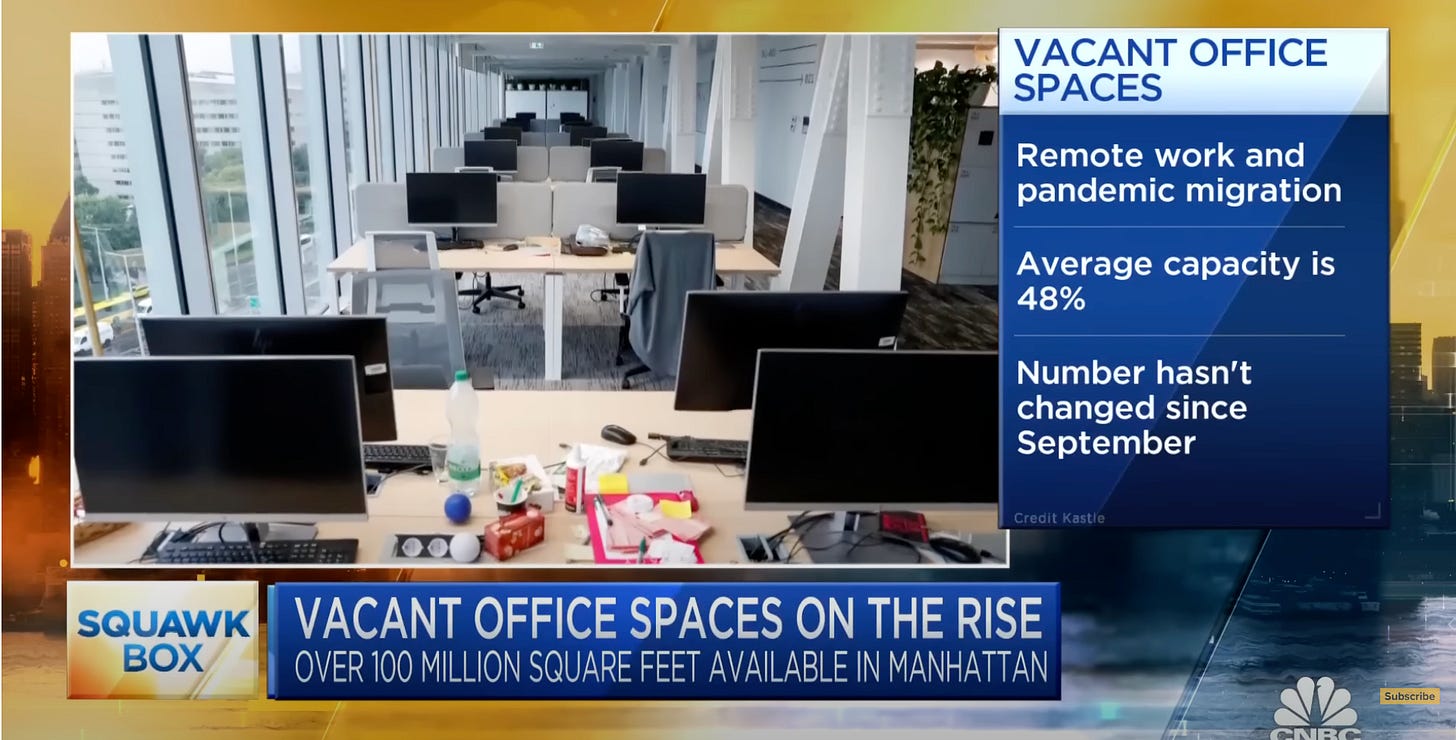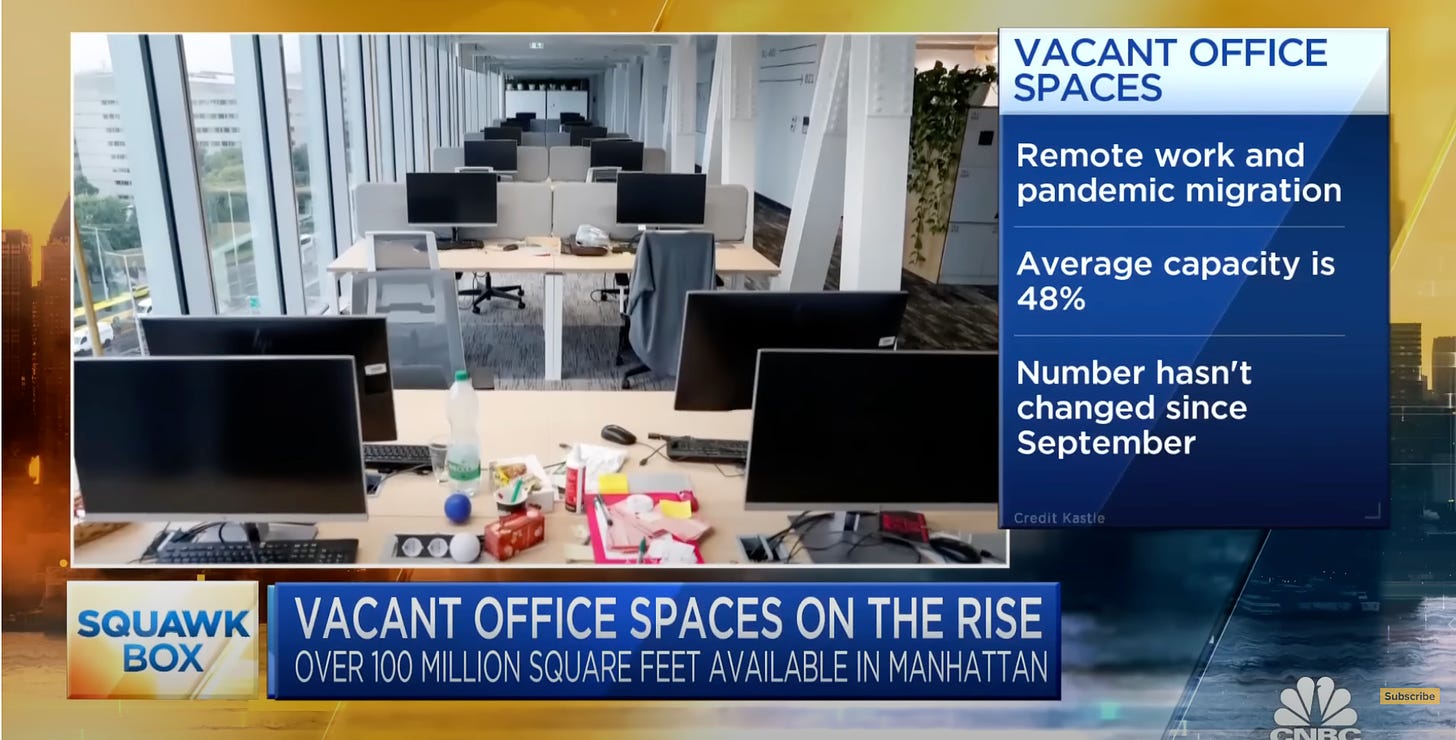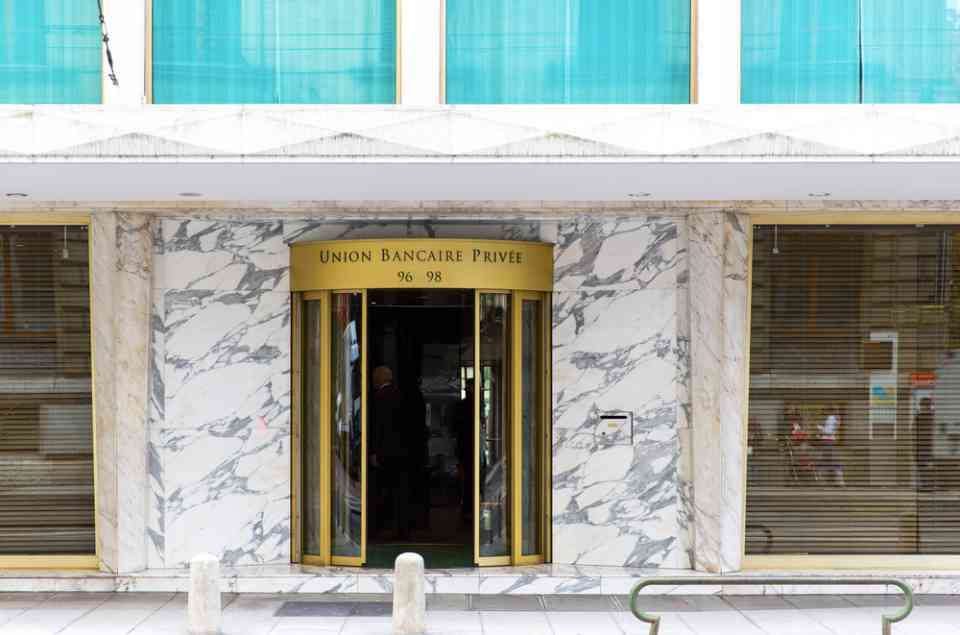New York magazine devoted its cover feature this week to the plight of empty office buildings: “The Panic and Pivot of Manhattan’s Office Megalandlords,” blares the headline from the Press Room, and if the term “megalandlord” doesn’t sufficiently move your sympathies, writer Andrew Rice makes it personal, introducing us to hard-luck Dickensian character Scott Rechler, who “fortuitously sold his family’s real-estate company at the top of the market to a competitor for $6 billion” and decided to buy up New York office space on the relative cheap after the 2008 financial crisis.
Rechler spent $4.5 billion acquiring Manhattan office buildings. His company, RXR, owned more than 22 million square feet of space by 2020. Then the pandemic hit. It was as if COVID-19 had a personal grudge against office buildings … and, of course, all those people the virus killed.
Multiyear leases for corporate tenants once guaranteed stability for landlords like Rechler. However, three years after the pandemic closed down most office buildings, workers aren’t coming back in sufficient numbers for employers to justify renewing their leases. Even New York Mayor Eric Adams has relented somewhat on his opposition to remote work. You can’t ignore an obvious reality.
The media has tried to help the “megalandlords” with increasingly alarmist articles about how remote work is “unhealthy” and slowly killing you. Your own home is apparently like the inside of a 1940s Kentucky coal mine. Studies suggest working from home makes you depressed, and we guess that has nothing to do with employers expecting you work twice as hard because they “can’t afford” to staff up.
The Hill ran an article a couple weeks ago suggesting that remote work “promotes a more sedentary lifestyle, which can contribute to blood clots, cardiovascular disease and diabetes.” Who knew sitting at a desk at home compared to sitting at a desk all day in an office had such a profound impact on your physical health? Maybe that’s the result of prolonged exposure to yoga pants … or perhaps studies like this are misleading garbage because the first few years of widespread remote work occurred during a devastating global pandemic. People were so depressed they watched “Tiger King.”
Rechler and other “megalandlords” made financial assumptions about the future that didn’t pan out. Those of us who studied print journalism in the 1990s can relate, but there were no desperate “studies” 20 years ago about how not reading newspapers anymore would make you impotent.
Rechler owns the million-square-foot 5 Times Square, which stands all but empty these days. RXR actually doubled down on its existing strategy in late 2020 and spent $50 million on upgrades.
RXR managing director Bill Elder told the New York Post in December 2020, “We’re not out of our minds. With the election over and the vaccines announced, people are starting to become re-engaged with the market. Remember, there were 19 million square feet of [corporate space] requirements before the pandemic, and most of it is still out there.
“I think by mid-year 2021, a lot of people will be outsourcing solutions to their space needs.”
Rechler is the same guy who insisted that it was a “civic responsibility” for workers to return to the office during a pandemic. Forget the tiresome commute and mildly inconvenient potential death, you owe it to the “megalandlords.” Writes New York:
“We’re crossing a chasm,” Rechler told me when I visited him at his office at 75 Rockefeller Plaza in early June. More than any of the city’s other major landlords, he’s been warning of what he calls a “slow-moving train wreck.” Like it or not, everyone suffers if banks collapse. And if you are a New Yorker, you have a great deal at stake in the market because of the enormous public revenue offices generate — 21 percent of the city’s property-tax levy — money that goes to pay for schools, public housing, fire trucks, pensions, parks, and so much else that makes life in New York tolerable.
Oh, yes, we’ve reached the “too big to fail” portion of our capitalist economy program. What also makes “life in New York tolerable” is affordable housing, which is practically nonexistent. But wait … Manhattan’s office-vacancy rate is estimated at a record-setting 22 percent, and the apartment vacancy rate is two percent. Problem meets solution, right? Well, not exactly.
Unfortunately, commercial real estate is not easily converted into residential housing. Even in New York, renters have come to expect apartments with windows and plumbing that can handle hundreds of people showering each day. Some commercial office buildings can make the transition to residential, which is good, though the “megalandlords” will more likely target them toward the well-off with high-end spa-like amenities. The big money isn’t in simply providing the working class a place to live. They can take three different subways from the outer boroughs.
Oh, sorry, can’t go further without sharing this passage:
Rechler, 55, is a bald, blunt real-estate dynast. He comes from a Long Island family that turned a small fortune made by his grandfather — he patented the folding aluminum beach chair — into a very large one, mostly by building industrial and office parks in the suburbs.
I guess someone had to invent the aluminum beach chair or, more accurately, “patent” it. In the business world, the creator of something is not always the eventual patent holder.
Brokers and landlords still hold up hope that workers will come back to the office as if they never saw “Severance.” Maybe it’ll feel so crowded on those Wednesdays when everyone’s in the office that people will start trudging back in on Mondays and Fridays.
Or maybe their entire business model is a lumbering dinosaur that fails to comprehend what that asteroid’s impact truly means.
[Curbed]
Follow Stephen Robinson on Bluesky and Threads.
Subscribe to his Substack.
Catch SER on his podcast, The Play Typer Guy.























































![Social Media Spring Cleaning [Infographic] Social Media Spring Cleaning [Infographic]](https://imgproxy.divecdn.com/9e7sW3TubFHM00yvXe5zvvbhAVriJiGqS8xmVFLPC6s/g:ce/rs:fit:770:435/Z3M6Ly9kaXZlc2l0ZS1zdG9yYWdlL2RpdmVpbWFnZS9zb2NpYWxfc3ByaW5nX2NsZWFuaW5nMi5wbmc=.webp)
![5 Ways to Improve Your LinkedIn Marketing Efforts in 2025 [Infographic] 5 Ways to Improve Your LinkedIn Marketing Efforts in 2025 [Infographic]](https://imgproxy.divecdn.com/Hv-m77iIkXSAtB3IEwA3XAuouMwkZApIeDGDnLy5Yhs/g:ce/rs:fit:770:435/Z3M6Ly9kaXZlc2l0ZS1zdG9yYWdlL2RpdmVpbWFnZS9saW5rZWRpbl9zdHJhdGVneV9pbmZvMi5wbmc=.webp)















